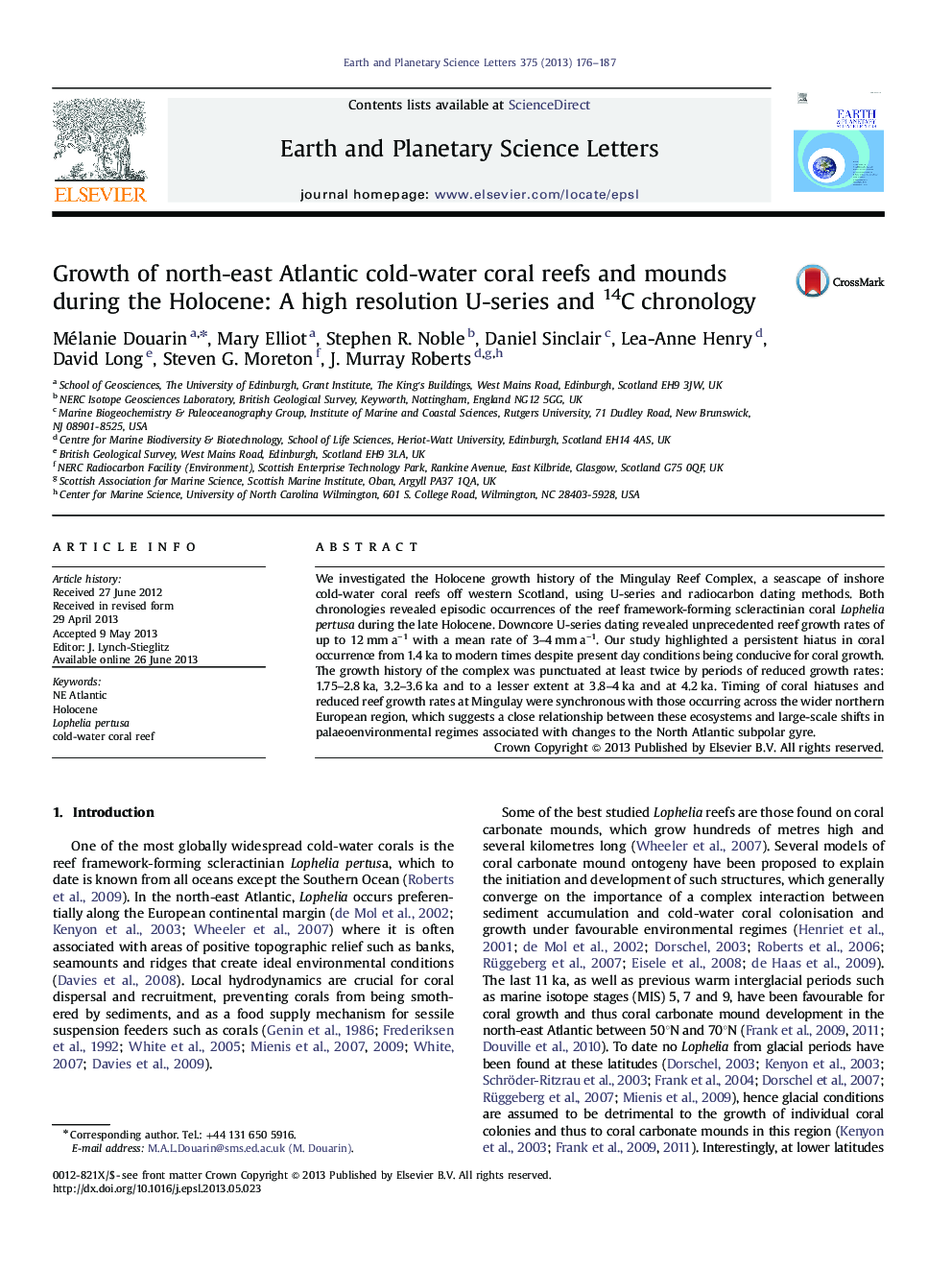| Article ID | Journal | Published Year | Pages | File Type |
|---|---|---|---|---|
| 6430197 | Earth and Planetary Science Letters | 2013 | 12 Pages |
â¢Chronology of Holocene cold-water coral ages revealed episodic reef growth.â¢Inshore reef growth off western Scotland averaged 3-4 mm aâ1 but peaked at 12 mm aâ1.â¢Reef growth declined over the last 1.4 ka, 1.75-2.8 ka, and 3.2-3.6 ka.â¢Cycles of reef growth occurred synchronously across the north-east Atlantic.â¢Lophelia reef growth appears linked to shifts in North Atlantic circulation.
We investigated the Holocene growth history of the Mingulay Reef Complex, a seascape of inshore cold-water coral reefs off western Scotland, using U-series and radiocarbon dating methods. Both chronologies revealed episodic occurrences of the reef framework-forming scleractinian coral Lophelia pertusa during the late Holocene. Downcore U-series dating revealed unprecedented reef growth rates of up to 12 mm aâ1 with a mean rate of 3-4 mm aâ1. Our study highlighted a persistent hiatus in coral occurrence from 1.4 ka to modern times despite present day conditions being conducive for coral growth. The growth history of the complex was punctuated at least twice by periods of reduced growth rates: 1.75-2.8 ka, 3.2-3.6 ka and to a lesser extent at 3.8-4 ka and at 4.2 ka. Timing of coral hiatuses and reduced reef growth rates at Mingulay were synchronous with those occurring across the wider northern European region, which suggests a close relationship between these ecosystems and large-scale shifts in palaeoenvironmental regimes associated with changes to the North Atlantic subpolar gyre.
